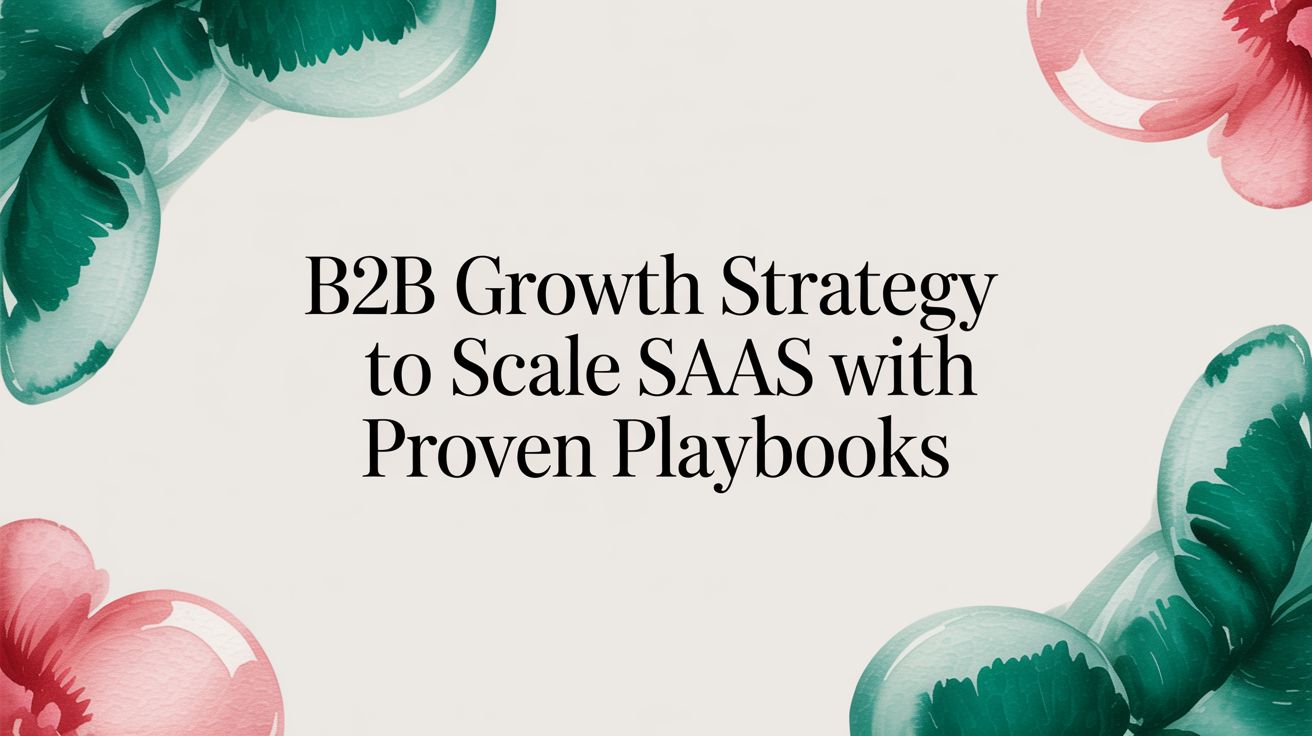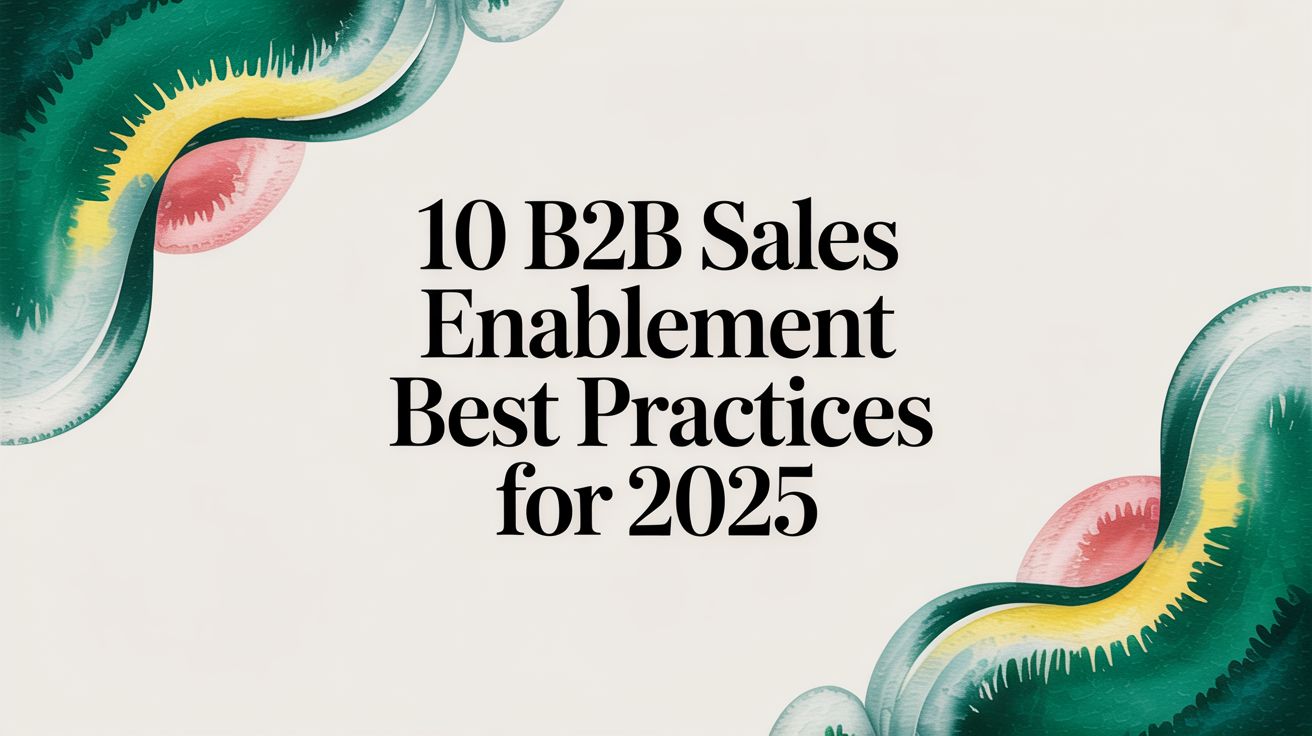B2B Buyers Want Simple Choices, Not More Complexity
January 31, 2025

When building your B2B marketing strategy, it can be very tempting to communicate the full range of your product’s capabilities and offer every available option at every stage of interaction with your B2B buyers.
‘More’ though inevitably means greater complexity. And the reality is that complex experiences confuse and turn-off B2B buyers.
Simplicity is often the best way to create more value for your customers, attract engagement and drive conversions. That doesn’t mean it comes easily or on its own though.
As more B2B companies embrace digital SaaS experiences your customers are constantly bombarded with more product information. B2B buyers don’t want more, but they want what’s right for them. And they want to make those decisions faster.
In my experience of consulting with 50 companies and startups, I’ve seen that most business leaders find it really hard to simplify their marketing.
Being so close to the product, they struggle to prioritize simple choices for their customers.
Here are 3 big moves you can make to simplify your B2B marketing:
1. Communicate value in the simplest way possible
In this excellent HBR article on verbal communication, the author learnt that in a conversation, listeners truly pay attention for the first 20 seconds. The next 20 seconds are more peripheral. After that 40 second period, a listener almost always tunes out.
In digital communication, this time goes down even further to 30 seconds. There are more vendors vying for your customers’ attention. You have their full attention for 15 seconds and then maybe for another 15s, if your initial message makes an impression.
When your product only has a few seconds to impress, you should craft a powerful message, choose the right content and prioritize your core values. Often the simplest words and most powerful values to fill up the 30 seconds will improve your odds of making the right impression. This is even more important on a website where users skim through content and only read a few words in every section.
A few quick examples of how a complex message can be simplified:
- “Improve your productivity and achieve improved results”
“Get everything done, faster.”
- “Prospect Journey and Communication Workflow Builder”
“Build a great customer journey” - “Advanced enterprise integration platform for data-analytics”
“Grow your enterprise with data cohesion”
Simplifying your message is much harder than it sounds. But to avoid confusing your customers, you must ignore the urge to talk about everything you can do and instead focus on a few simple phrases to frame your product’s value.
Remember, your goal is to help B2B buyers visualize the ultimate goal they can achieve with your product. Your product is the enabler but your B2B customers are only focused on their goals.
2. Offer fewer choices to help B2B buyers decide faster
B2B buying decisions are complex and time-consuming. B2B buyers often have to research hundreds of vendors to create a shortlist based on numerous factors. Then, they must take the responsibility of choosing a vendor on behalf of their company, and even take on a fraction of the risk.
Every time you give more than two or three options to a B2B buyer with your marketing, you make their already complex decision-process even more complicated.
The harder a choice is, the less likely they are to progress in your marketing process. You want your marketing to have the opposite effect on B2B buyer – to make them feel it is easy, and even obvious to choose your product over the other options.
It’s easy to tackle this by adopting binary decisions when designing a customer journey for your product.
At every touchpoint, give your customers only two options to choose from.
- Subscribe OR read more blogs
- Start a trial OR view pricing
- Learn more about Product A OR Product B
- Explore solutions OR read case study
- Request a demo OR explore plans
In rare situations you can add a third choice if there is value in it, but not more than that.
At this point I often hear the passionate founders exclaim
“Just two or three choices? But my product does so much more!”
I get that. But you can’t overwhelm your customers by stuffing all your features in the first 30 seconds. To cover more, split the touchpoint into two or more touchpoints, each with 2/3 choices.
This makes it easier for your B2B buyers to make a binary decision at every touchpoint, traverse more touchpoints, and continue engaging with your product. Simple choices lead to faster decisions.
3. Create unified experiences by better structuring your teams
A common mistake B2B companies make is to allow their product, marketing and customer success teams work independently. The teams collaborate but purely on a request-deliver basis.
This is based on decades old team structures that have nothing to do with the reality of SaaS or digital-first B2B products.
The reality of modern B2B buying process is that the customer only has one experience with the brand/company. And from a user-experience point of view, different properties of that brand – website, trial, product, email – are all part of a single journey.
A unified experience is at the heart of a successful B2B SaaS product. And in B2B marketing today the lines between marketing, product and customer success are blurred.
Your marketing is a gateway to the product. You can’t scale your marketing if your product doesn’t deliver on the message. And your product can’t grow unless your marketing and analytics are not strong.
The e-mail communication spans engagement, signup, trial and active product use cycles. Your customers share their success and failures with your product on social media. It’s an intertwined universe.
To take advantage of this, encourage your marketing, product and customer success teams to work as one unit. The closer the work, the more customer-focus they will have. That focus will inevitably help them create simple, unified experiences for your B2B buyers.
Simplicity creates more value for everyone
B2B buyers are already overwhelmed with more product information and sales pitches.
All they want is to find what’s right for solving their business problems, and they want to make those decisions faster. Simplicity is often the best way to create more value for your customers, attract engagement and drive more conversions.
Need help simplifying your message or creating better B2B buyer experiences?
Get a free consulting with me here.
%20-%20Alternate.svg)


%20-%20white.svg)